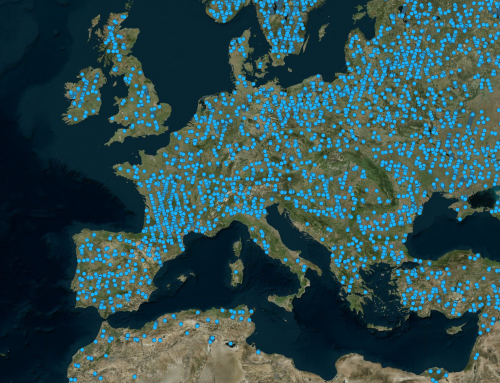SCARBO: A constellation of small satellites for monitoring greenhouse gases
SCARBO project aims at solving a key challenge of anthropogenic greenhouse gases (GHGs) monitoring from space: improve the temporal revisit over the various sites of interest while meeting the accuracy and spatial resolution requirements (as per the EU guidelines on anthropogenic GHGs monitoring). This is envisaged by implementing a novel miniaturised static spectrometer concept on a constellation of small satellites, coupled with an aerosol sensor.
We work on the inversion of both CO2 and CH4 species.
We work on the inversion of both CO2 and CH4 species.
To date, our work on this project has included the following:
- The development of a detailed scientific specification of the new space mission concept by considering the needs expressed by different types of users at different scales: local, regional and global. This scientific work was approbated by the experts of the European Commission and a representative panel of users including international organizations, research institutes, space agencies, communities and industrialists.
- The design of new GHG inversion models and specific algorithms for evaluating the performance of the future nano-satellite mission at different scales.
Project details
Categories:
Tags:
Share this project:
SCARBO: A constellation of small satellites for monitoring greenhouse gases
Project details
Categories:
SCARBO project aims at solving a key challenge of anthropogenic greenhouse gases (GHGs) monitoring from space: improve the temporal revisit over the various sites of interest while meeting the accuracy and spatial resolution requirements (as per the EU guidelines on anthropogenic GHGs monitoring). This is envisaged by implementing a novel miniaturised static spectrometer concept on a constellation of small satellites, coupled with an aerosol sensor.
We work on the inversion of both CO2 and CH4 species.
We work on the inversion of both CO2 and CH4 species.
To date, our work on this project has included the following:
- The development of a detailed scientific specification of the new space mission concept by considering the needs expressed by different types of users at different scales: local, regional and global. This scientific work was approbated by the experts of the European Commission and a representative panel of users including international organizations, research institutes, space agencies, communities and industrialists.
- The design of new GHG inversion models and specific algorithms for evaluating the performance of the future nano-satellite mission at different scales.
Client / Partner(s)
This project is supported by the European Union’s Horizon 2020 research and innovation programme No 769032.






